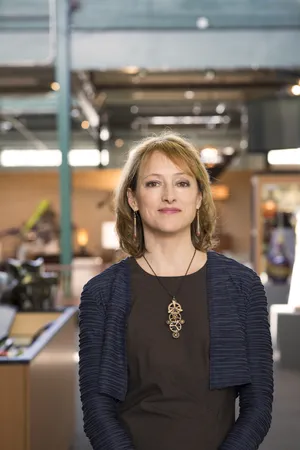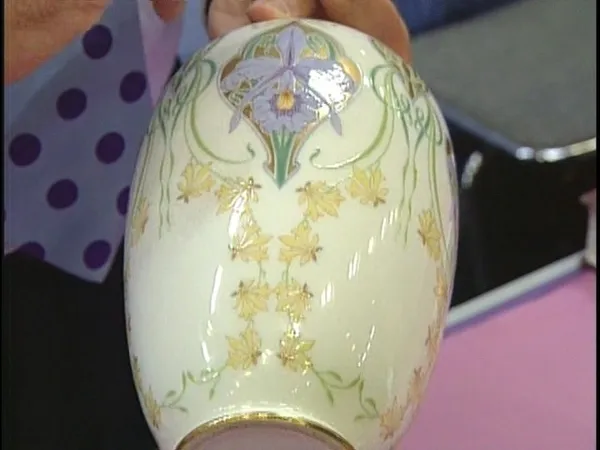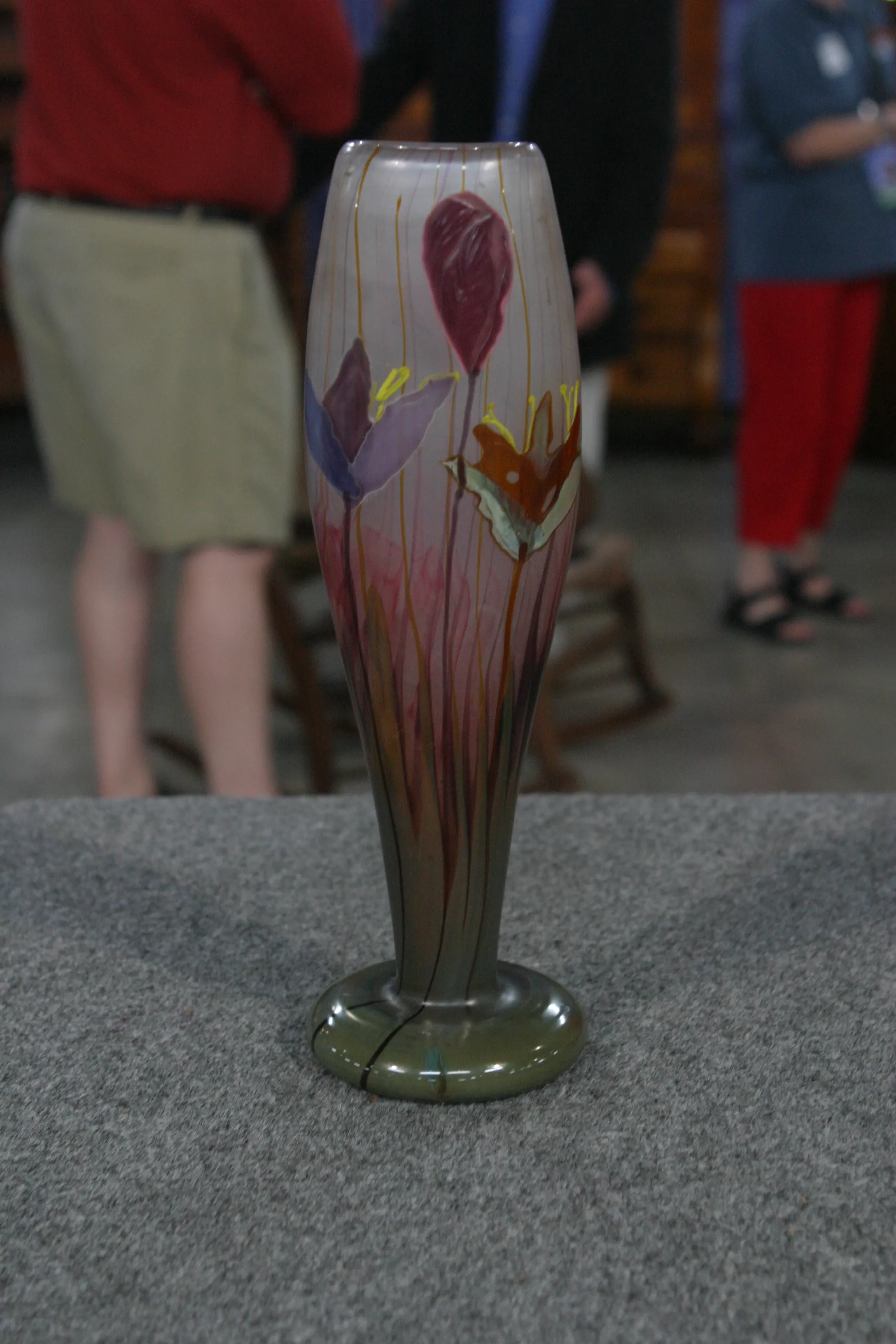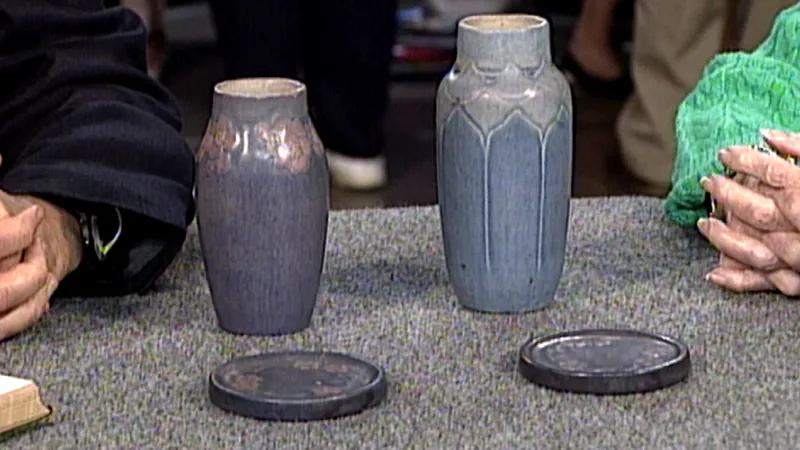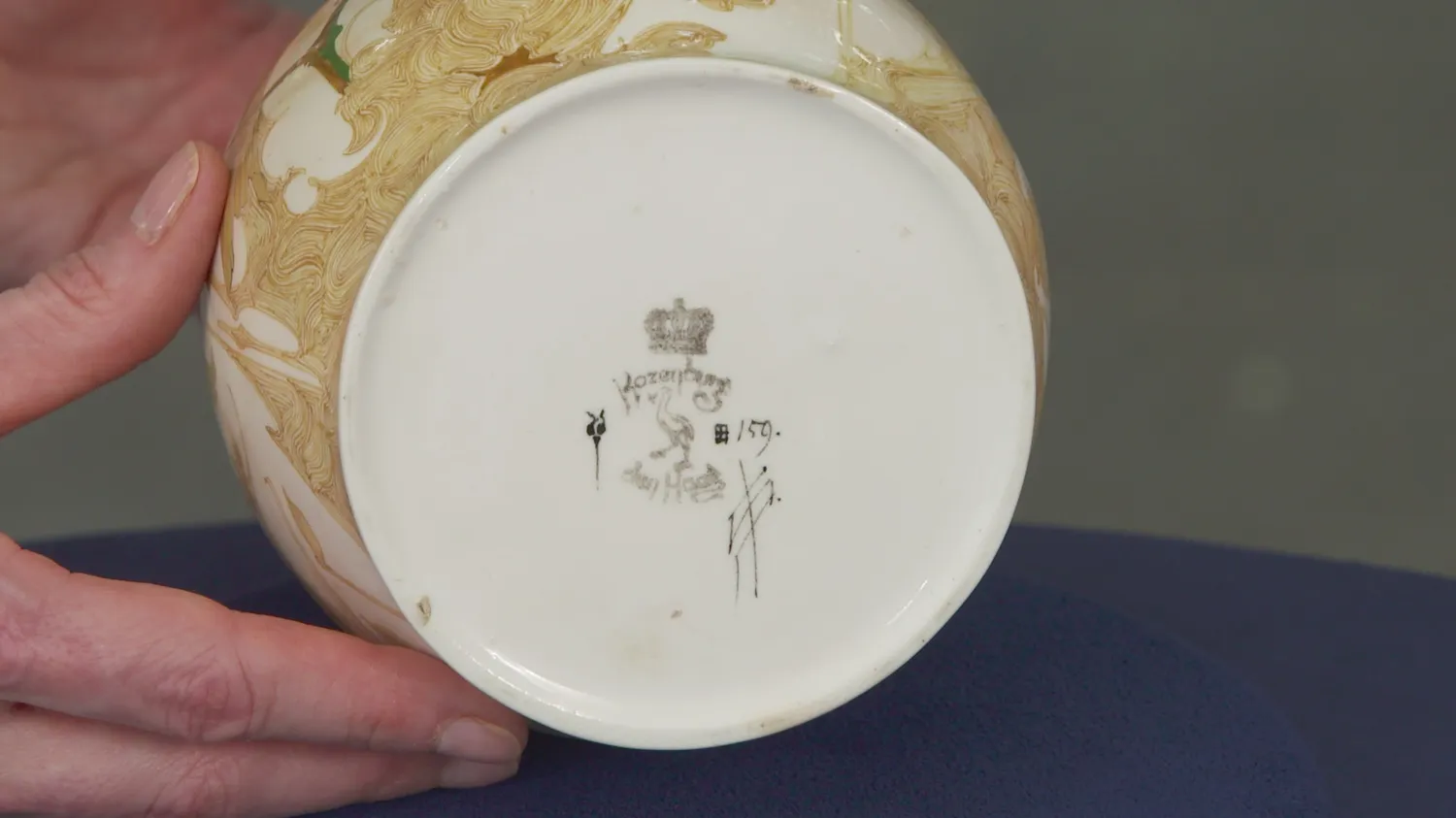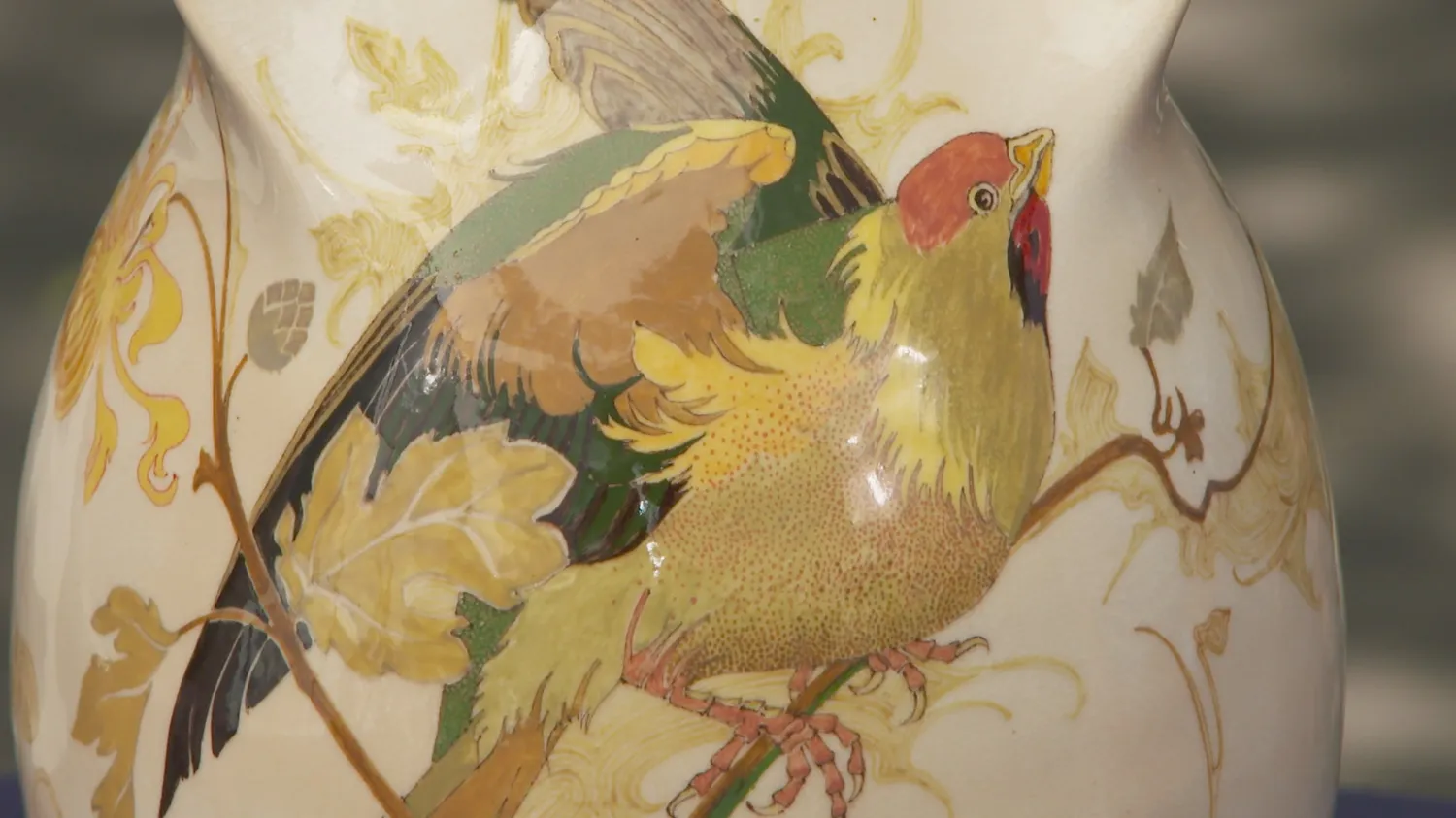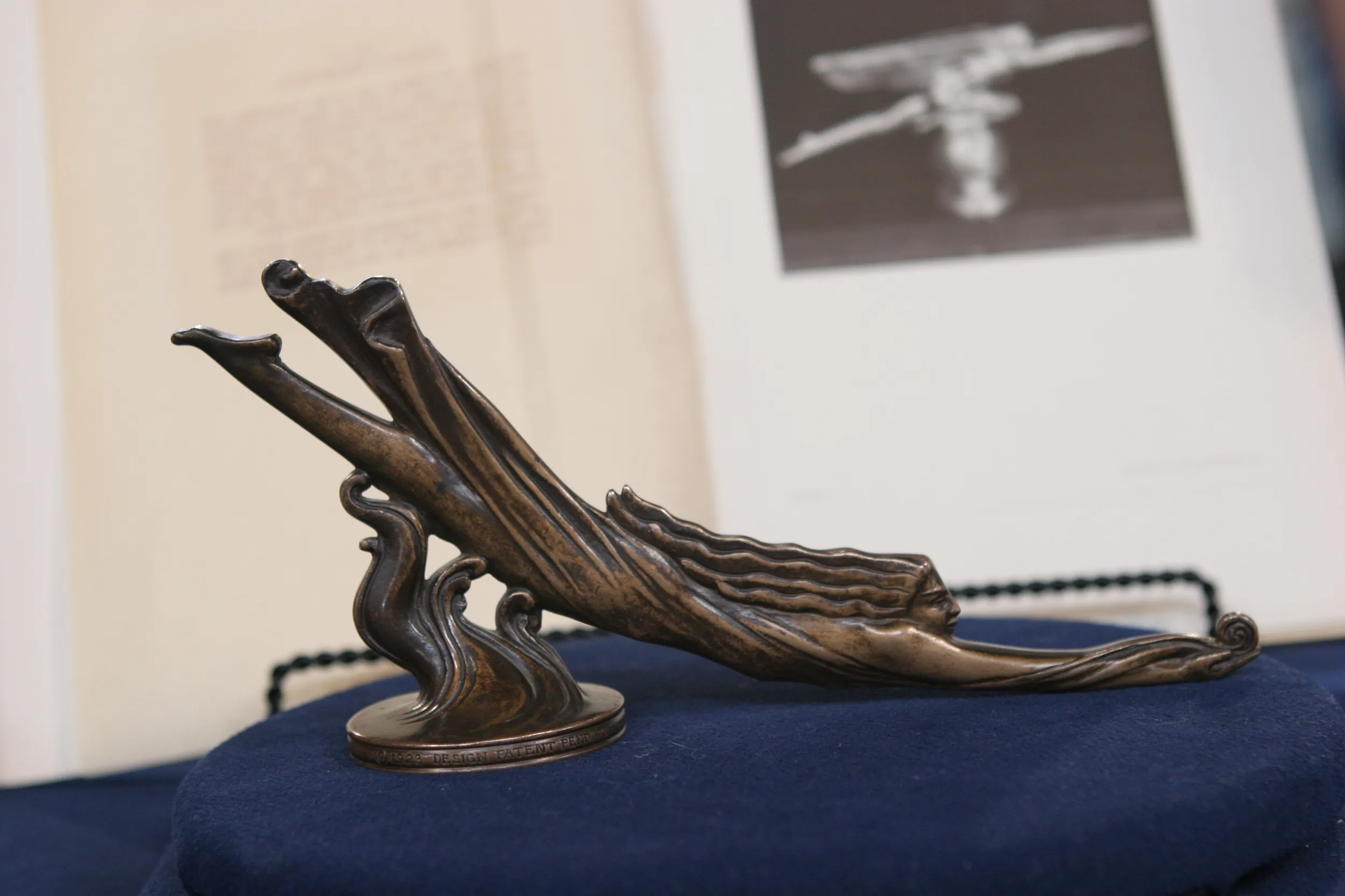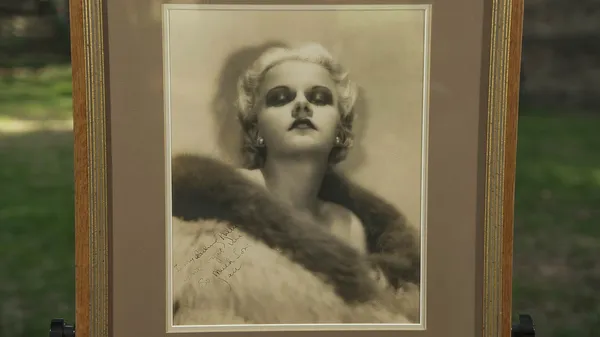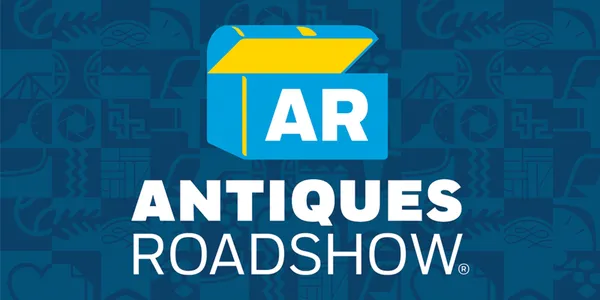APPRAISER: We don't get to see many Rozenburg vases here. So please tell me about how you got it.
GUEST: My mother and I were visiting in England. A friend of mine invited us to his mother's home for tea. The mothers hit it off. We were shown around, my mother admired this, and, uh, as we left, it was given to her.
APPRAISER: Put it in her purse.
GUEST (both laughing) Yeah, just about. This happened in 1970. So she had it in her home until maybe seven or eight years ago.
APPRAISER: Huh.
GUEST: And then, uh, came to me. When it be, came into my possession, I looked online, and I saw something that looked similar, but there was no description. And it was just a photo. And I basically just put it back in the box, and, uh, it's been in the closet ever since.
APPRAISER: It is such a gorgeous example, made by one of the world's greatest porcelain companies. The Netherlands have a very long and rich history in making ceramics.
GUEST: Yes, yes.
APPRAISER: Lower- and higher-fired, but it goes to the 16th century or before. With the end of the 19th century, moving away from the blue and white, a lot of what is associated with Delft...
GUEST: Mm-hmm.
APPRAISER: ...which was ping-ponging back and forth between looking at Asia, they were looking at Delft, and so on, and moving the ceramics back and forth throughout the world in this rich blue and white texture. They moved away from that with Art Nouveau. And they made this, which looks extremely French. It is so well done, and it is delicate in every facet. Rozenburg worked in several series, but this particular line is done in eggshell porcelain. It is extremely delicate, fine, and translucent. The painting is Asian Art Nouveau. It has two absolutely, perfectly complementary sides to it, one with this gorgeous bird-- this is very difficult to make-- and this one with this chrysanthemum. Rozenburg opened, uh, around 1883. They started making these, uh, in the late '90s until 1913, this particular line. They were doing other lines at the same time, but this is what they became best known and best remembered for.
GUEST: Oh!
APPRAISER: I will show you how it's marked here. So you have the Rozenburg and den Haag. It is from the Hague, which has become known since for the International Court of Justice. And the gentleman who was in charge of this line was Samuel Schellink.
GUEST: Hmm.
APPRAISER: Obviously a very talented fellow. At auction, I would estimate this at $2,000 to $3,000.
GUEST: Mmm! Surprised-- really surprised. I haven't really given it much thought at all. (laughs)
APPRAISER: If you wished to insure it, I would probably do this at about $4,000 or $5,000.
GUEST: Okay. Oh, my gosh. Gosh, I really didn't have any idea. (laughs)
